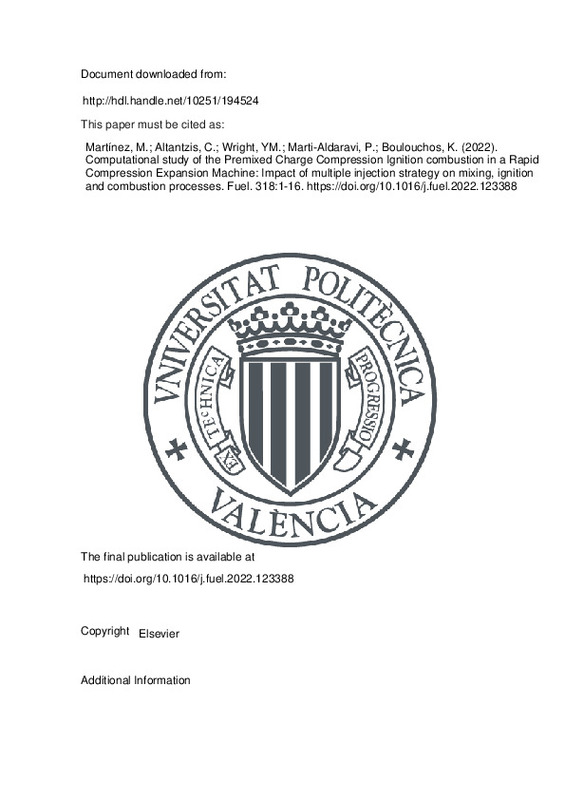JavaScript is disabled for your browser. Some features of this site may not work without it.
Buscar en RiuNet
Listar
Mi cuenta
Estadísticas
Ayuda RiuNet
Admin. UPV
Computational study of the Premixed Charge Compression Ignition combustion in a Rapid Compression Expansion Machine: Impact of multiple injection strategy on mixing, ignition and combustion processes
Mostrar el registro completo del ítem
Martínez, M.; Altantzis, C.; Wright, YM.; Marti-Aldaravi, P.; Boulouchos, K. (2022). Computational study of the Premixed Charge Compression Ignition combustion in a Rapid Compression Expansion Machine: Impact of multiple injection strategy on mixing, ignition and combustion processes. Fuel. 318:1-16. https://doi.org/10.1016/j.fuel.2022.123388
Por favor, use este identificador para citar o enlazar este ítem: http://hdl.handle.net/10251/194524
Ficheros en el ítem
Metadatos del ítem
| Título: | Computational study of the Premixed Charge Compression Ignition combustion in a Rapid Compression Expansion Machine: Impact of multiple injection strategy on mixing, ignition and combustion processes | |
| Autor: | Martínez, María Altantzis, Christos Wright, Yuri M. Boulouchos, Konstantinos | |
| Entidad UPV: |
|
|
| Fecha difusión: |
|
|
| Resumen: |
[EN] Combustion processes operating under the low-temperature (LTC) are a promising alternative for internal combustion engines, achieving high efficiency and low emissions within the legislative framework. Under this field ...[+]
|
|
| Palabras clave: |
|
|
| Derechos de uso: | Reconocimiento - No comercial - Sin obra derivada (by-nc-nd) | |
| Fuente: |
|
|
| DOI: |
|
|
| Editorial: |
|
|
| Versión del editor: | https://doi.org/10.1016/j.fuel.2022.123388 | |
| Código del Proyecto: |
|
|
| Agradecimientos: |
Authors would like to thank the FVV (Forschungsvereinigung Verbrennungskraftmaschinen | Research Association for Combustion Engines, project "Partially premixed diesel combustion with multiple injections'', no. 1352) and ...[+]
|
|
| Tipo: |
|







![[Cerrado]](/themes/UPV/images/candado.png)


